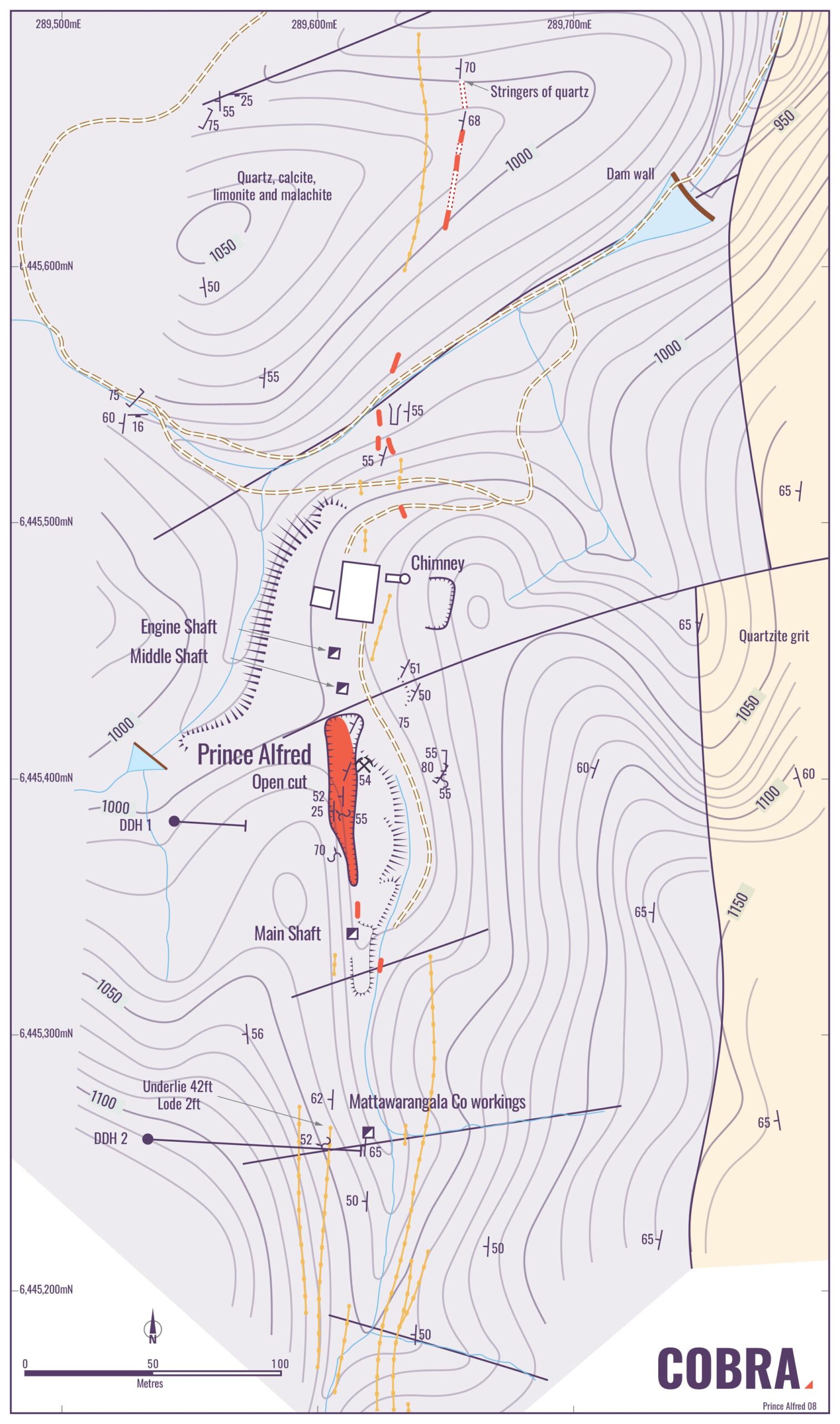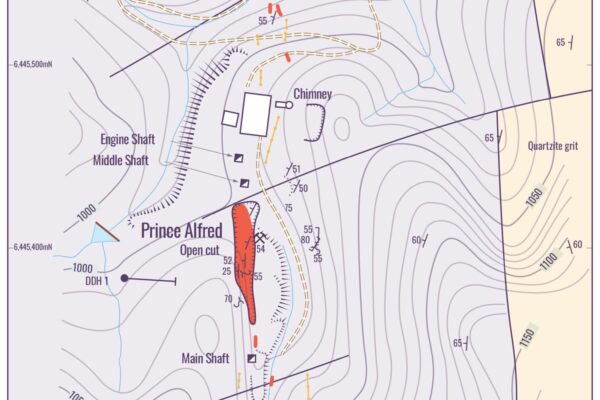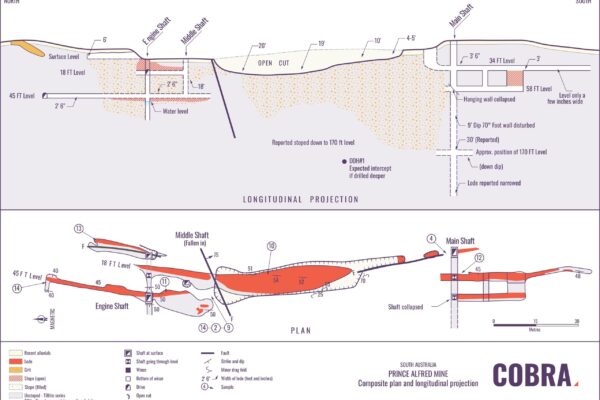 Prince Alfred Copper Project
Prince Alfred Copper Project
Highlights
- Formerly producing copper mine (1907) located within the Adelaide Fold Belt
- Historic high-grade mineralisation reported as 3-5% copper
- Unexplored for over a century – depth or extent of mineralisation has never been properly tested – opportunity for exploration with modern technologies
- 100 km from Port Augusta, a prominent Australian transport hub city
Work to Date
- Original mine operated during the late 19th and early 20th century, recovering approximately 40,000 t of ore at 3-5% copper to a depth of 51m
- Mining ceased due to 1907 copper price crash
- Working EPEPR being developed

Ownership
Cobra Resources 100%
Exploration Licence:
Prince Alfred
Licence Area:
9 km2
Targets:
Copper

